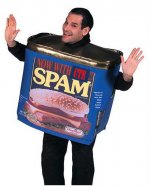Can the Proof Be Possible?
Almost every time the subject of aiming systems comes up on one of the forums, the posters start disagreeing and the thread degrades into an off topic flame war. Taking into account what they say about opinions, I believe that the critics either can’t stand the idea that a system of any kind is possible or they think they are trying to hide what they believe to be an inside secret, or at least a secret they believe gives them a competitive edge.
The system(s) I have been taught are strictly for pocketing balls and do nothing more than provide a means of accurate ghost ball striking. These systems can probably be proved by applying Thales Theorem for inscribed angles: An inscribed angle inside a circle, one side of which is a diameter always subtends to a right angle opposite the diameter line. On a pool table, the diameter line through a ball pointed to a pocket, which happens to be the corner of a square inside which the ball is situated, forms a right triangle the exact same shape as those formed by the contact point to the center of the pocket and to both of the rails extending from that pocket. While this is not rocket science, I think this is the principle on which most of the aim and pivot type systems are based. I also think someone with a proficient background in geometry would be able to develop a good proof analysis. I have been trying to come up with a diagram of proof but cannot quite get there. If one does nothing but visualize the two triangles in the object ball and cue ball, or better yet, develops a system for visualizing it in the cue ball, the ghost ball, and the object ball, it should be beneficial to some extent. I certainly don’t claim to be an expert, but I have had success with the aim and pivot method, cue stick alignment methods, and simple visualization. I suggest there is no one-size-fits-all and I have not discussed variables, like throw, deflection, etc.
The following, based on Thales Theorem, applies only to the striking of an object ball at a specific point and all of the aforementioned contains personal observations, some related.
A GEOMETRIC PROOF
Aim at the object ball contact point from an offset position on the cue ball in the direction of the cut.
Pivot the cue to the center of the cue ball for a center ball hit.
These two steps move an inscribed angle inside the ghost ball which forms a right triangle with the 90 degree angle at the contact point.
This is the hard proof and it is nothing more. There will be success and failure, much of which will be the subject of conjecture, but most of the systemic performance problems will probably be with the fact that we are working with a blunt 12 to 13 mm. thick aiming device.
